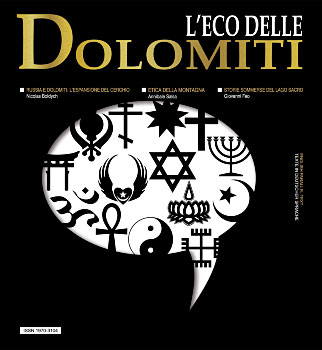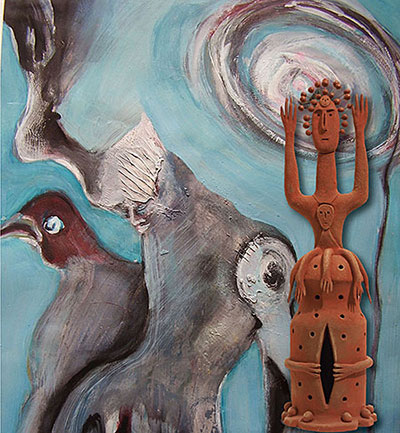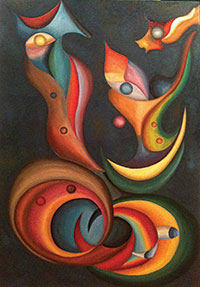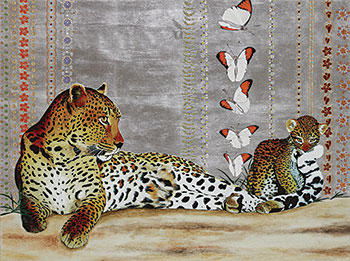

ALTER NATIVITAS 2012
Melina Scalise

What does it mean to be born today? What does it mean to be brought into the light as individuals in today’s society? What do images of births and newborn children evoke in our imaginations?
We have tried to answer these questions through art, inviting a group of artists to represent, in contemporary forms, the Nativity, considered one of the principal scenes of Birth in our culture’s collective imagination.
Two years on from our first exhibition on the theme, organised by Spazio Tadini, Nativity 2010, the theme has been re-proposed by Il Sextante, widening the scope of the project to include new artists, in collaboration with L'Eco delle Dolomiti magazine, and hosted at Pinzolo thanks to its Culture Council, for the second edition of the exhibition, “The Art of the Nativity”.
Over the years the iconography of Jesus Christ’s birth has remained generally intact, but today’s family and environmental contexts have certainly changed how a new-born is welcomed into contemporary society.
Starting from a visual analysis of the traditional representation of the Nativity, it is quicker to see what remains: the baby. In fact, it is no longer possible to take the parents for granted as father and mother (Joseph was not the biological father), because today, we might have a single parent, (artificial insemination, or surrogate mother), or a homosexual couple, or even an extended family.
The environment is no longer the hut or house, but a delivery room that has no need for oxen or donkey to heat the environment. Furthermore, these animals are no longer needed in a domestic environment, for the work of the parents, or to the survival of the family. To this we add the fact that, today, we can plan the birth and even some genetic aspects of the unborn child. We can even decide to give birth in cyberspace: on the internet, in Second Life, or some other virtual environment.

And then there’s the matter of the gifts and visitors Jesus receives from shepherds and wise kings: how does this fit in with the early Neapolitan interpretations of the Nativity which are crammed with artisans, citizens and merchants who populate “the village”, each character working on tasks necessary for the life of the community? Today, these are gone. And whither the potentates with their reverent gifts of “gold”, “frankincense” and “myrrh” for the children of the world? Today, they seem interested only in giving them a tax ID and public debt to pay off.
The coming of Christmas is the time to reflect on the character of Jesus and the significance of his arrival on this world as the son of God, on the mystery of his Birth. But it is also the time to consider him as the simple man, who nevertheless left an important mark on society thanks to his “ideology”. This fact should give us pause to reflect on how each individual on this planet can change the course of history with the power of his mind and the will to act. A time, then, to remember how great is the spirit of the individual compared to the collective whole.
This is an important reflection given this period in time where we have become convinced of the impotence of the individual compared to the powerful forces such as international economic and political lobbyists.
I believe Christmas should not be solely the “birthday” of Jesus, but also – moving beyond the strictly religious interpretation – the “birthday” of each of us, a renewed understanding of our potential as individuals, the mysteries of life, and the beauty of living it to its fullest.
Yet even such simple reflection is constantly obscured by commercial machinery and the hypocrisy of Christmas “goodwill” that imposes, upon all of us, at least one good deed towards our neighbours.

This deed is consummated by the rite of the “gift”, conceived as an equivalent to giving money. It is as if 364 such deeds each and every day were indifferent or even harmful to our neighbour, but at least one, the 365th, should involve the “purchase” of some form of “certificate of goodness”.
Over the centuries, the representation of the Nativity in art has also served as a means of following its evolution over time. Artists have modified the relationships between the characters on many occasions, adding or changing actors, changing the intensity and direction of the light to emphasise points of attention, applied new symbology, varied the context and even the scenery.
For this reason, we have brought artists together once again to show us this quintessential birth scene in the context of today’s society, that of 2012.
